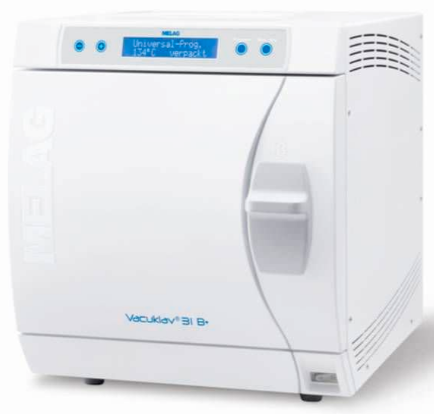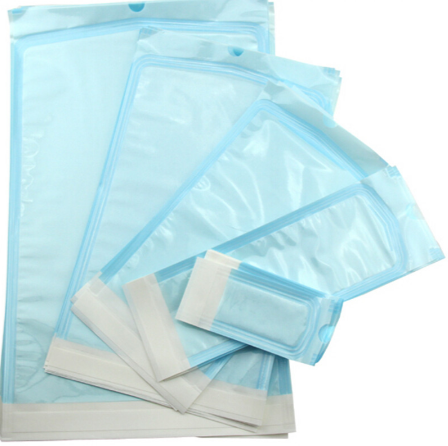To the utmost extent, we are aware how a non-sterilization field can affect our (doctors) as well as patient’s health.
Dental clinics are the places where the chances of cross-contamination are excessive.
Since dental clinics have high pervasiveness of acquiring these diseases, a keen observance of the sterilization procedure in your dental clinic can help you & your patient to be free of any fatal diseases like- Hepatitis & HIV/AIDS
The first case of AIDS was reported in the year 1980, April 24 in the United States to the Centre for Disease Control.
Hepatitis B virus has 2-8 % prevalence worldwide.
In the dental office, infections can spread via multiple routes, including contact with contaminated instruments, airborne contaminants, contact with blood, oral fluids etc.
The infection free environment demands of efficacious & consistent sterilization of instruments & to keep an infection free environment in a dental office is not an easy task but limit the probability of cross-infection.
Cross-infection or contamination control includes cleaning, disinfecting & sterilization of the used dental instruments.
Sterilization: is defined as “destruction or removal of all viable organisms from an object or from a particular environment”.
Steps to be executed to maintain an infection-free zone in the dental office are:
- Before examining the patient the first & foremost thing a dentist must note down is the patient’s past medical history which helps the dentist to follow extra precautionary methods if needed.
- To attain prime outcome the instruments which comes in direct contact with the tissues or blood are probable source of infection & thus should be sterilized (autoclaved) after each & every use.
- Instruments seldom in contact with the tissues like x-ray heads, blood glucose monitoring devices, blood pressure cuffs, pulse oximeters should not be autoclaved, rather be cleaned with disinfectants.
- Once the sterilization procedure is completed, the instruments should be packed in the pouches, sealed & kept in the UV chambers to avoid instruments from getting infected.
- To maintain a sterile environment in the operator in order to control exogenous infections it must be fumigated i.e. gaseous sterilization is used for killing micro-organisms & to prevent the growth of microbes in air, wall & floor surface.
- Disposables are meant to be disposed of once used. Disposables like glasses, needles, cartridges, gloves, sutures etc shouldn’t be used again. No reuse of disposables diminishes the chances of cross-infection amongst patients.
- Before cleaning in biosonic & sterilizing in an autoclave, the instruments must be kept for 24 hrs in disinfectant, as disinfectant reduces the microbial load to some extent.
Biosonic® UC125 Ultrasonic Cleaner

The ultrasonic cleaner uses sound waves to agitate liquid in the cleaner which directly acts on the contaminants clinged on the instruments.
The aim is to thoroughly separate the contaminants densely adhered to the surface of instruments. It has a cleaning solution containing surfactant which makes the ultrasonic cleaning more effective than the plain water.
MELAG Vacuklav 31 B+

This autoclave works according to the fractionated pre-vacuum method. At first, the air is evacuated from the chamber with an effective vacuum pump. Afterward, there is a repeated intake of steam which is immediately pumped out again. The result is- at the beginning of the actual sterilization, there is no longer any air in the chamber or in wrapped hollow-instruments or in textiles which would endanger the success of the sterilization & thus eliminate the growth of microbes & micro-organisms.
Autoclave Pouches

The autoclave pouches keep the sterilized instruments free of microbes. The packaging also provides the protection during storage & transport of instruments. The instruments which can be sterilized must be stored in these pouches to maintain the sterility to the point of use.
The sterilized instruments once stored in these packages, must be labelled with the date of sterilization & use by date on top of the pouches.
Durr Dental’s System Hygiene

Disinfection must be the top most priority of a dental professional. Disinfectant reduces the microbial load. Contaminated instruments play the major role in cross-infection thus cleaning & disinfecting the used instruments must be the foremost preference for dentists.
Durr ID 213 disinfectant consists of active substance alkylamine & the concentrate is completely virucidal for disinfecting general, surgical & rotary instruments. Also, helps to remove stubborn contaminants adhered to the instruments.
Dental clinicians before treating their patients must make sure about the successful sterilization procedure being followed in the clinics. Also, they must spread the awareness among the patients how hiding their medical history can affect their as well as doctor’s life.
Following thorough sterilization procedures can minimize the chances of cross-infections.






